⭐ Introduction to How Does Residential Ductwork Work
Residential ductwork is an essential component of any HVAC system responsible for distributing conditioned air throughout your home.
However, many homeowners may not fully understand how these (somewhat) complex ducts work in regard to an air distribution system.
In this article, we’ll take a closer look at residential ductwork, exploring its components, operation, and the importance of regular maintenance.
Understanding the basics of how residential ductwork operates can help you, the homeowner, maintain your HVAC system and ensure that it runs efficiently and effectively for years to come.
With this knowledge, homeowners can detect issues early and prevent them from becoming problematic.
This can save you both money and discomfort from malfunctioning systems.
Understanding residential ductwork is essential for every homeowner, and that’s why we will dive deep into the subject to help make it easy to understand.
Table of Contents
⭐ What is Residential Ductwork?
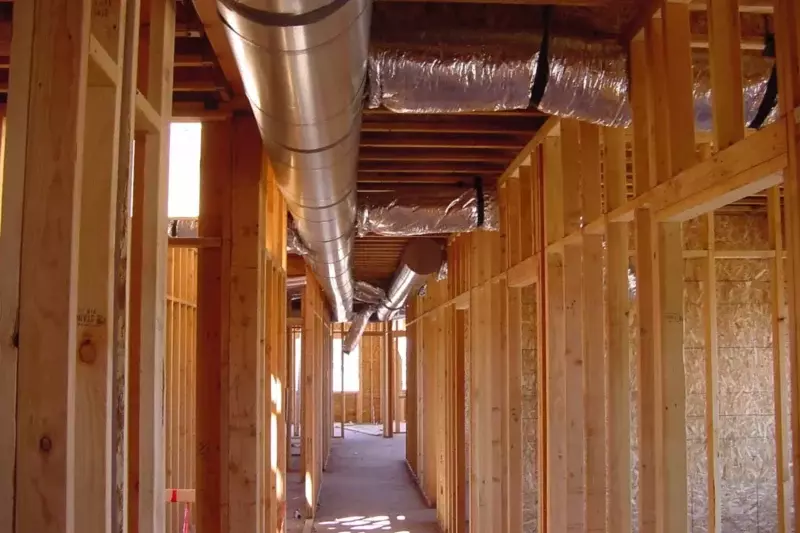
HVAC ducts are conduits that supply warm or cool air to heat, ventilate, and cool each room in your house.
HVAC ductwork is connected to the HVAC unit, like a fuel-burning furnace or electric air handler, filters, heats, or cools your home’s air before sending it off.
Air ducts are a vital part of your HVAC system, providing forced air to any room in your house with a register and helping maintain indoor air quality and temperature.
⭐ What Are The Three Types of Ductwork?
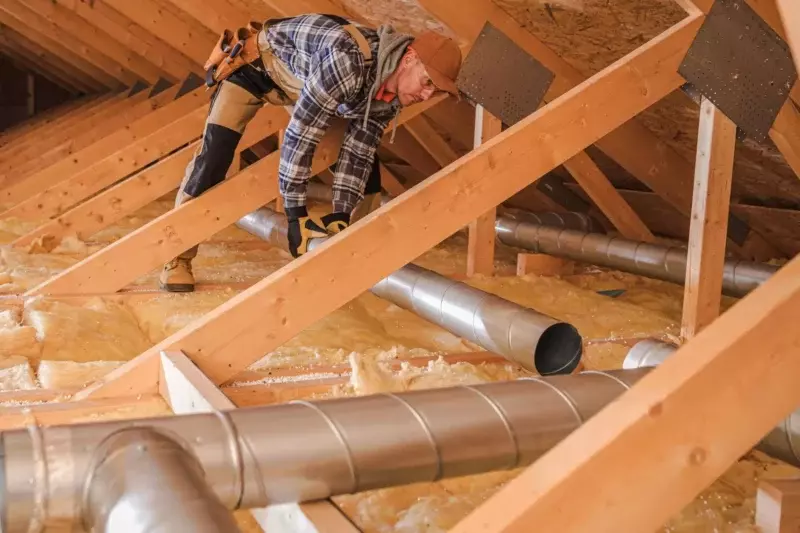
🔧 Sheet Metal Ducting
The most common type of duct material for your home’s air distribution, sheet metal ducts typically come in round or rectangular form.
Round duct is usually of a thicker “spiral” shape when used for a plenum or main supply duct, but a thinner gauge round “snap-lock” is used for any branch line to transport air to the registers.
🔧 Fiberboard Ducting
Commonly known as ‘Thermopan,’ it is typically used for the return air duct.
The fiberboard duct spans two joists to create a return duct out of a joist space in a basement ceiling.
This can only be done for any return runs that align with the ceiling joists, and a transition from fibreboard to metal ductwork must be made when running perpendicular to the ceiling joist.
🔧 Flex Duct
This is used when adding heating or cooling ducts to your home.
It can come either insulated or uninsulated, and as the name suggests, it is flexible enough to bend into hard-to-reach spaces.
A properly installed flex duct will have no air leakage; however, the ribbing inside the duct creates a high level of air resistance which makes the system work that much harder to transport air to the register at the end.
⭐ Ductwork Design
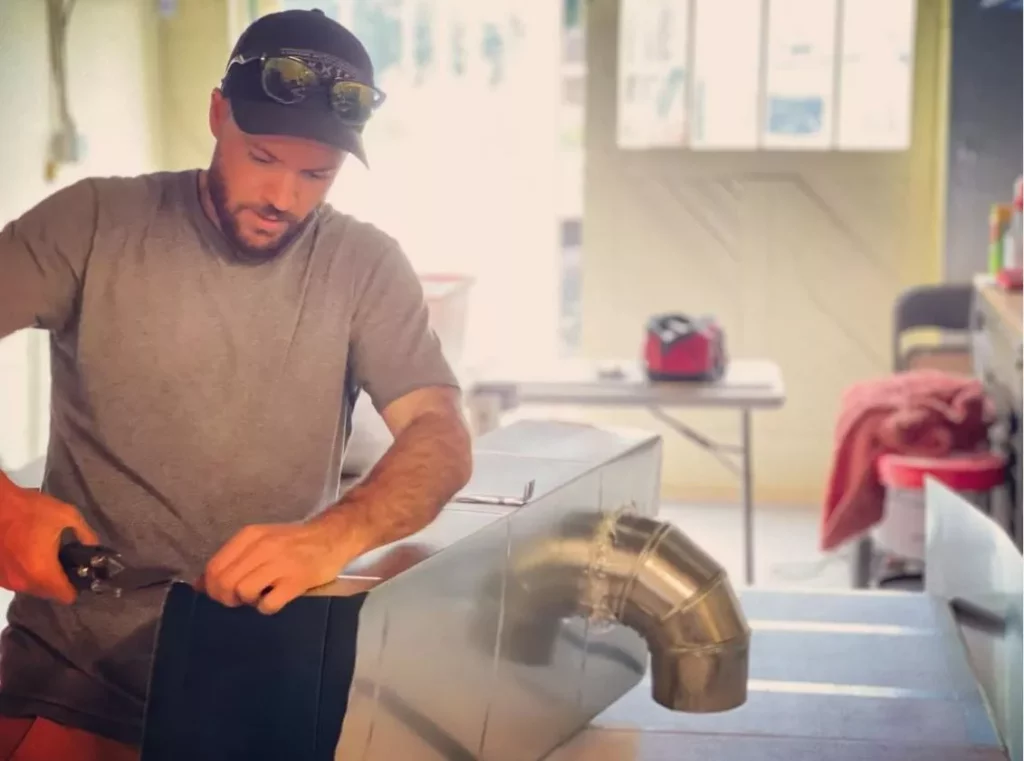
🔧 Supply Ducts
As the name suggests, supply ducts force warm or cool air throughout the home.
Registers at the end of each run can control the amount of air that comes out.
Registers are usually installed below windows and doors to make up for the loss of heat or cold.
In larger rooms, it is common to have two air vents.
🔧 Return Air Ducts
Return ducts send air from throughout the house back to the furnace or air handler.
Return registers are the starting point for getting your home’s air pulled back to the fan and pushed out through the ductwork, which starts the cycle all over again.
Return registers are larger than supply registers and are either metal or plastic grills.
There is one more type of return air too.
This is the fresh air from outside that is piped straight into the return air plenum.
This will help with indoor air quality issues stemming from high humidity, letting the house “breathe.”
A key component on houses built typically between the 1960s and the 1990s when the building envelope was not considered “airtight,” the fresh air ventilation pipes helped reduce moisture by bringing fresh, unconditioned air into the home.
🔧 How Air Flows In A Forced Air Duct System
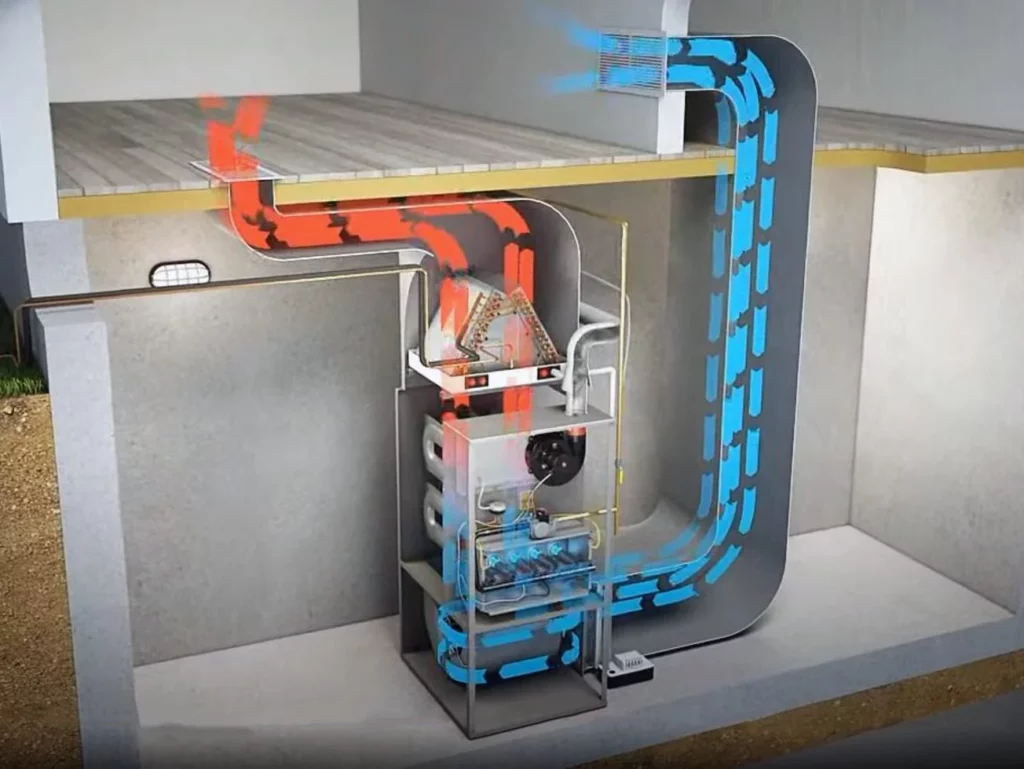
When there is a call for heating or cooling, the blower fan in the furnace or air handler will come on.
This creates positive air pressure on the downstream side and forces air through the supply ducting into each room.
Consequently, the upstream side of the blower fan is pulled into negative pressure and sucks stale room air through the return air system to meet up with the fan.
🔧 Duct Sizing
This can be a very long and complicated topic, which is best left to an HVAC expert.
Related Reading: HVAC Duct Calculator
🔧 Ductwork Layout
There are three common layouts for a residential duct system.
The first is a radial duct design, which has the HVAC unit in the middle of the home with the supply ducts extending out around the plenum like the legs of a spider.
This layout is best installed on a concrete slab floor as the heated air can do double duty by keeping the floor warm as well as providing heat to the living spaces.
The second layout is the extended plenum design, where the supply trunk does not reduce in size as it extends along the building.
This is a simple way to get air from one end of the building to the other.
However, the main drawback is there will be less CFM (cubic feet per minute) of air reaching the farthest register.
The third is just an alternative to the last one.
A reducing plenum design is where the main supply trunk reduces in size as it extends across with the branch ducting coming out from each side.
This will counteract the loss of CFM along the trunk as the reduction in duct cross-sectional area will increase the air velocity.
🔧 Ductwork Fabrication
On-site duct fabrication is a whole skill in itself, and these tradespeople can be very successful by doing so.
The main types of ducts, such as round, rectangular, and all fittings, are made in a factory with industrial machinery.
However, simple gap-filling ducts called “transitions” can be easily made on-site.
All you need are some basic ‘tin bashing’ tools.
⭐ Tips for Ductwork Installation
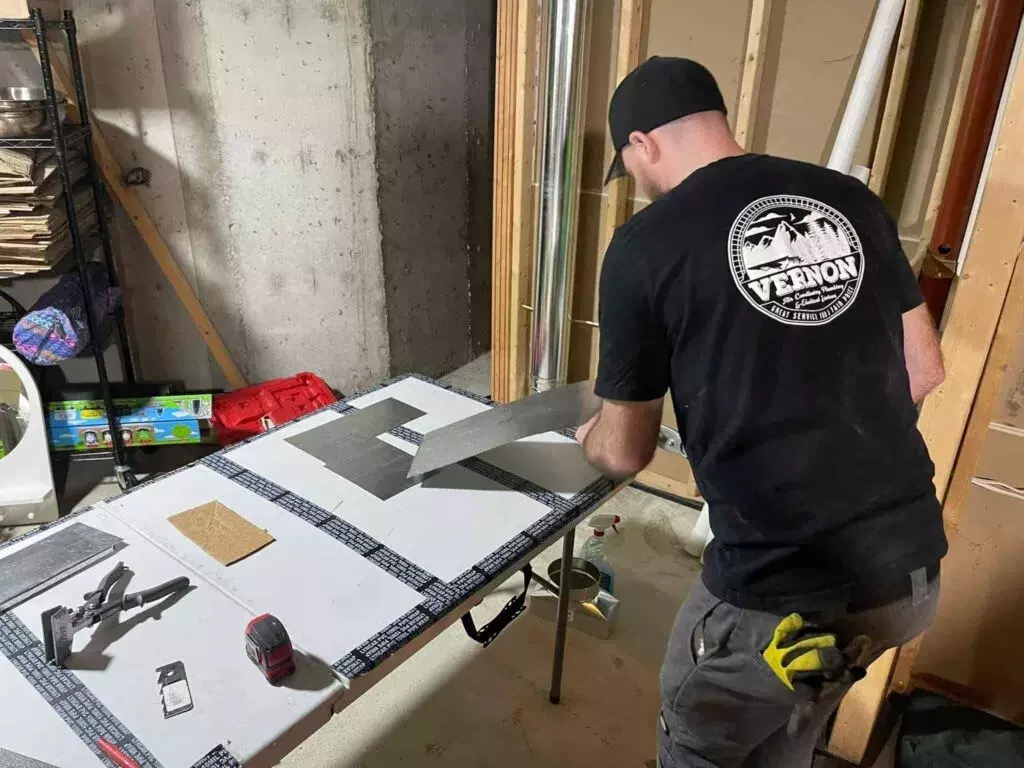
With the right tools, it can actually be quite simple to fab up a piece of metal into the fitting you need.
Any homeowner who wants to do their HVAC ductwork should have a 24″ folding bar, a pair of hand seamers, a red (left) and a green (right) pair of metal snips, a tinning hammer, and some metal scissors.
A tape measure, cut-resistant gloves, a black felt marker, and a portable folding table are recommended too.
Just remember to take your time, follow a plan, wear gloves, and keep away from the sharp edges.
Related Reading: Duct Repair: A Homeowners DIY Guide
Related Reading: Ductwork Installation Guide For Homeowners
⭐ How To Maintain Your Ductwork
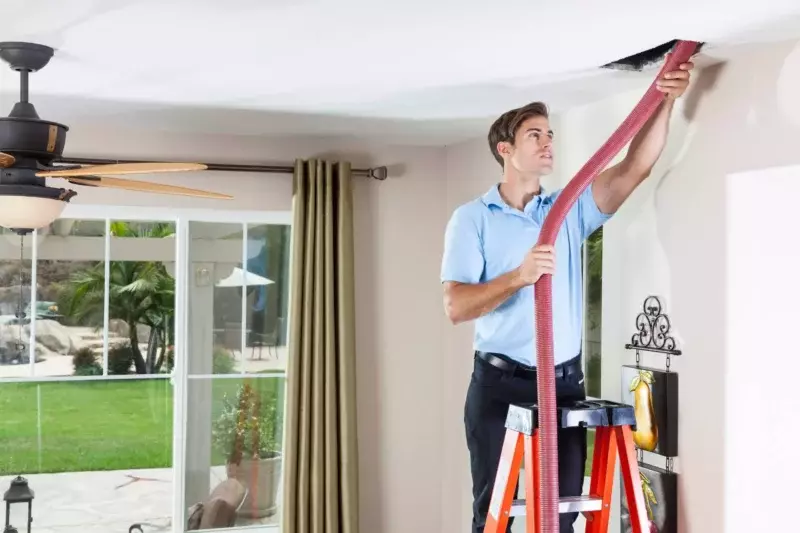
The best way to maintain your home’s air ducts is to get them cleaned by a certified duct cleaning company.
It seems niche, but ductwork cleaners exist in most cities, and there’s a good chance your local HVAC contractor company has one on staff with a fully functioning machine.
Well-maintained air ducts should be cleaned once every 2-5 years, depending on the level of dust, amount of pets, or the indoor air quality in the home.
Good duct cleaners will remove registers and clean each branch, then cut a hole into the main trunks and clean those from the end to get the whole air duct system.
Afterward, they will use a metal patch to cover each hole.
Related Reading: What You Need to Know About Ductwork Cleaning
⭐ Common Ductwork Problems

🔧 Hot & Cold Spots
This is one of the most common complaints many HVAC contractors receive.
One room is too hot, but the next room is too cold.
The main reason for this is bad airflow to that particular duct.
Bad airflow is the root of most ductwork issues and can be attributed to bad duct connections, uninsulated ducts, twisted or kinked flex ducts, unsupported supply and return runs, and unnecessary bends.
Related Reading: Homeowners Guide to Duct Insulation
🔧 Little Or No Air Flow From Supply Vent
Along the same lines as hot and cold spots, having little to no airflow from the supply plenum means air is simply not arriving at the register.
Try hiring a company to do a duct cleaning, or simply remove the register and look as far down the ducts as possible to see if anything is blocking airflow.
Another tip would be to change your HVAC filter.
Once a filter gets dirty, it impedes air from being distributed throughout the cooling or heating system.
🔧 High Utility Bills
Duct leakage is one of the biggest culprits to high heating and cooling bills.
Conditioned air leaks tend to happen in unconditioned spaces like a crawl space or mechanical room.
A properly installed air duct should have any potential air leaks sealed with mastic tape or a duct seal painted on.
This is very common in commercial ducting but has only recently caught on in residential HVAC.
Related Reading: Homeowners Guide to Ductwork Sealing
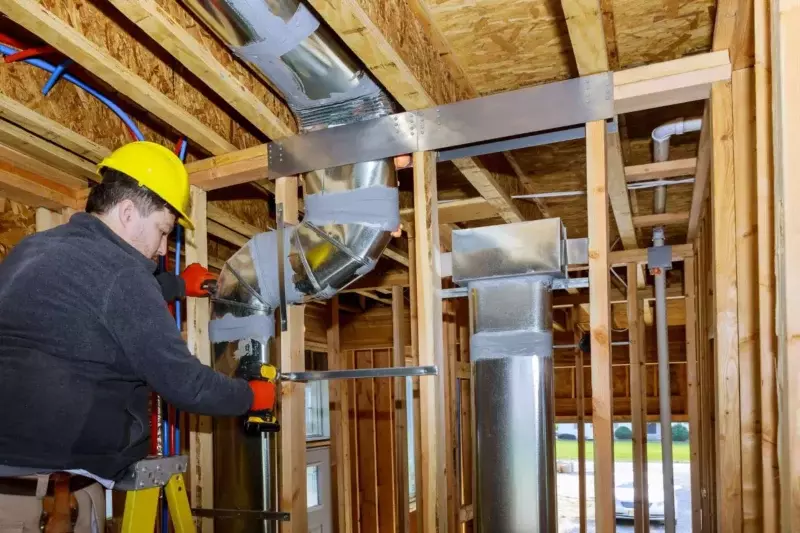
🔧 Loud Noises
If you hear loud banging, whistling, or vibrating noises coming from your heating and cooling ducting, you probably have loose, disconnected, or damaged air ducts.
You can try following along the route of your ducts and take a look for anything suspicious.
Maybe the return air duct is not connected to the fibreboard transition anymore?
Maybe the air conditioning line set has pushed some branch duct work up, and the air is escaping there before getting to the end?
Or maybe a piece of equipment is on the fritz, and that sound is simply making its way through the indoor air ducts?
Basically, if you hear a loud noise, try following it to the source. If you can’t find that, it may be time to call a professional.
⭐ Finally!

Residential ductwork is crucial in ensuring comfortable indoor temperatures and high air quality in your home.
By understanding the components and how they work together, you can better maintain and care for your ductwork, ensuring it runs efficiently and effectively.
Regular cleaning and inspection, as well as calling in a professional when needed, can help prolong the life of your ductwork and keep your home’s indoor air healthy and comfortable.
Remember, a well-functioning ductwork system not only improves the air quality and comfort in your home but can also save you money on energy costs.
So don’t forget to give your ductwork some TLC!
Want to learn more about your home’s HVAC system? Feel free to check out our other HVAC articles!

